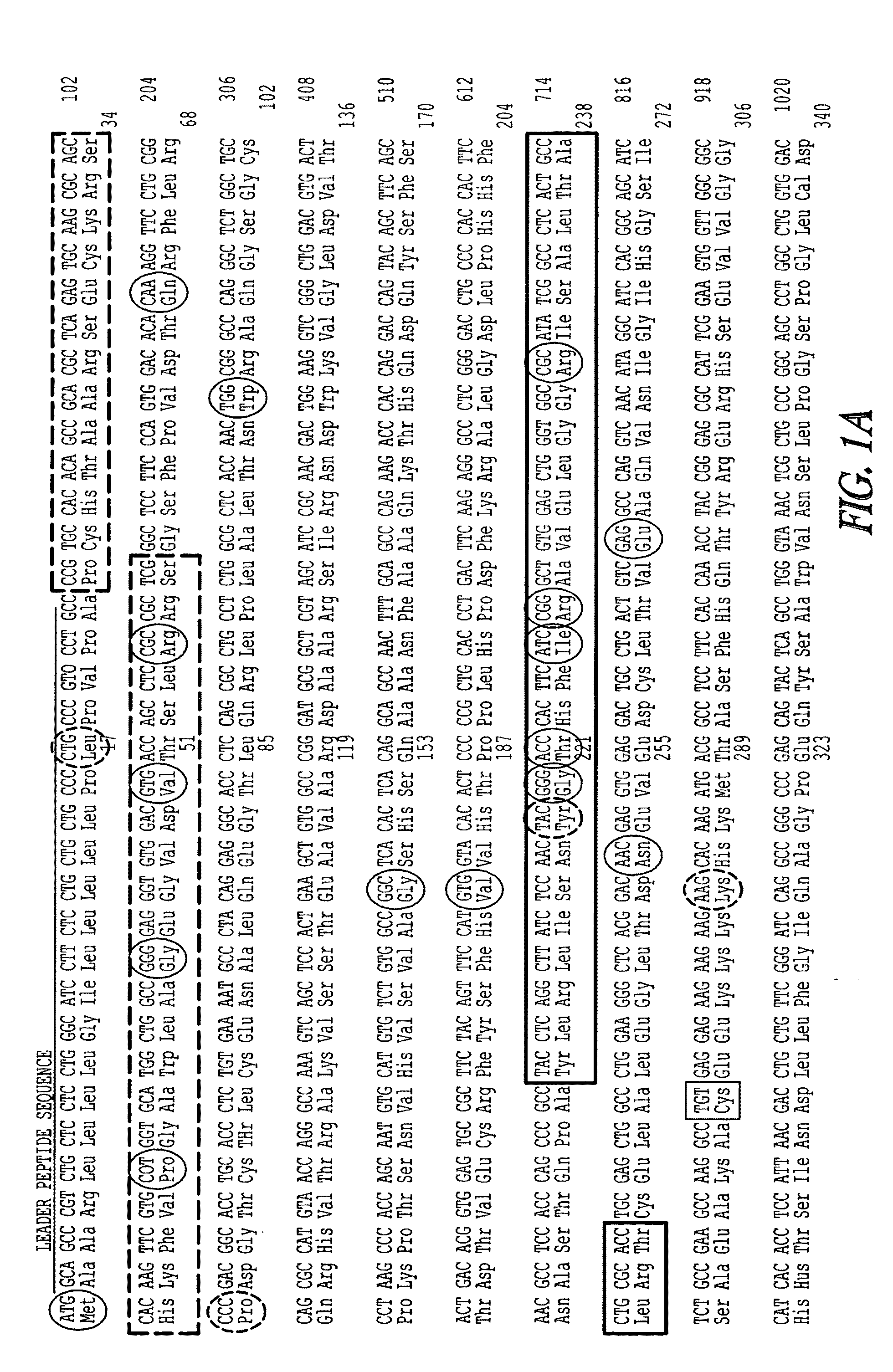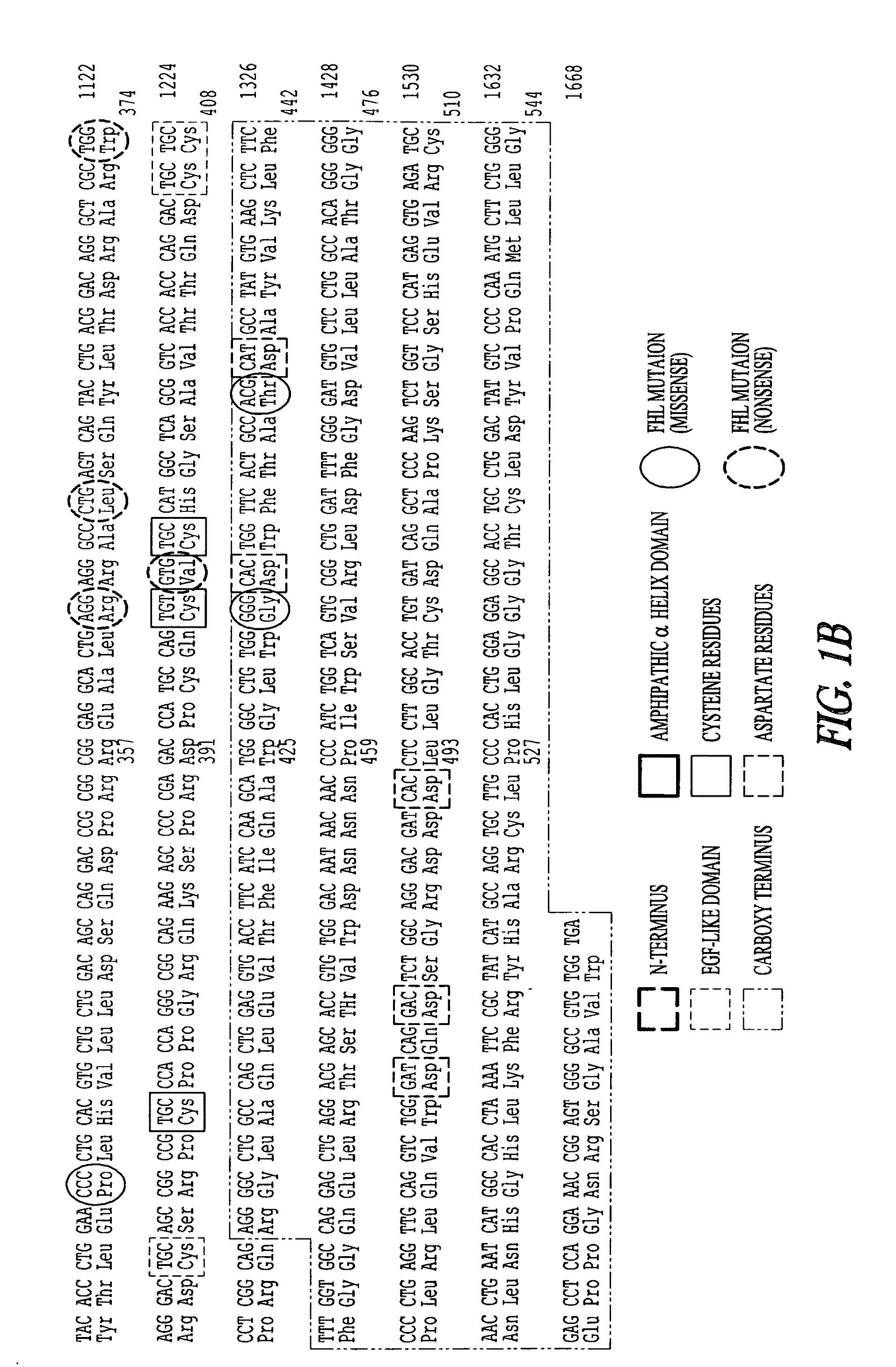Recombinant perforin, expression and uses thereof
a technology of recombinant perforin and expression, applied in the field of recombinant perforin, expression, can solve the problems of low expression rate, high probability of metastatic spread, and low understanding of the function of perforin at the molecular and cellular levels, and achieve the effect of reducing expression
- Summary
- Abstract
- Description
- Claims
- Application Information
AI Technical Summary
Benefits of technology
Problems solved by technology
Method used
Image
Examples
example 1
The Expression of Wild Type Mouse Perforin in RBL Cells
[0224]A. Expression of Perforin
[0225]The following description includes materials and methods used for the recombinant expression, analysis and assesment of wild type mouse perforin.
[0226]i) Cell Culture
[0227]The cell lines RBL-2H3 (American Type Culture Collection-ATCC), 293T (human embryonic kidney) and EL-4 (mouse thymoma) were maintained in Dulbecco's modified Eagle's (DME) medium supplemented with 10% fetal calf serum (FCS), 2 mM glutamine (Commonwealth Serum Laboratories, Parkville, Melbourne, Australia (CSL)) and 100 μg / ml each of streptomycin and penicillin (Gibco, Grand Island, N.Y.). The cell lines were maintained in a humidified incubator at 37° C. in 10% CO2. For harvesting RBL-2H3 and 293T cells, cells were washed once in PBS, and a trypsin-EDTA solution (CSL, Australia) was added to detach cells from the tissue culture flask. Cells were washed once in PBS before use.
[0228](ii) Generation of a Plasmid Vector Encodin...
example 2
Functional Analysis of Two Missense Perforin Mutations (G429E and P345L) by Retroviral Expression in RBL Cells
[0271]A. Construction of Mutated Mouse Perforin cDNAs
[0272]The mutations identified in Patient 5 (G429E) and in Patient 6 (P345L) (FIG. 12) were introduced into recombinant perforin cDNA for expression in RBL cells. MSCV plasmids encoding the mutated perforin cDNA will be referred to as P5-Pfp and P6-Pfp respectively. Using the wild type perforin cDNA inserted in MSCV (WT-Pfp) as a template (see Example 1), mutations were introduced using a site-directed mutagensis PCR reaction and the following primers:
[0273]For the introduction of the P5 (G429E) mutation:
Sense:5′AGAACATCTGTGGGAAGACTACACCACAG3′(SEQ ID NO: 3)Antisense:5′CTGTGGTGTAGTCTTCCCACAGATG3′(SEQ ID NO: 4)
[0274]For the introduction of the P6 (P345L) mutation:
Sense:5′ CTACAGCCTGGAGCTCCTGCACACATTAC 3′(SEQ ID NO: 5)Antisense:5′ GTAATGTGTGCAGGAGCTCCAGGCTGTAG 3′(SEQ ID NO: 6)
[0275]The PCR were set up according to manufacture...
example 3
Functional Analysis of Two Putative Polymorphisms (R225W and G429E) Associated with Familial Hemophagocytic Lymphohistiocytosis
[0308]This study elucidates the cellular basis for perforin dysfunctions in hemophagocytic lymphohistiocytosis and demonstrates the utility of aspects of the present invention as a means for studying the “structure-function” relationship of perforin.
[0309]A. Cell Culture.
[0310]The cell lines RBL-2H3 cells (rat basophil leukemia; American Type Culture Collection), which will be referred to in the text as RBL, and 293T (human embryonic kidney) were maintained in DMEM medium supplemented with 10% FCS, 2 mM glutamine, and 100 μg / ml each of streptomycin and penicillin in a humidified incubator at 37° C. Jurkat T cells were maintained in RPMI-1640 medium supplemented as above. RBL and 293T cells were detached from culture flasks using trypsin-EDTA solution (CSL Ltd.) at 37° C.
[0311]B. Transient Transfection of RBL Cells.
[0312]Mature human and mouse perforin each h...
PUM
| Property | Measurement | Unit |
|---|---|---|
| molecular mass | aaaaa | aaaaa |
| molecular mass | aaaaa | aaaaa |
| diameter | aaaaa | aaaaa |
Abstract
Description
Claims
Application Information
 Login to View More
Login to View More - R&D
- Intellectual Property
- Life Sciences
- Materials
- Tech Scout
- Unparalleled Data Quality
- Higher Quality Content
- 60% Fewer Hallucinations
Browse by: Latest US Patents, China's latest patents, Technical Efficacy Thesaurus, Application Domain, Technology Topic, Popular Technical Reports.
© 2025 PatSnap. All rights reserved.Legal|Privacy policy|Modern Slavery Act Transparency Statement|Sitemap|About US| Contact US: help@patsnap.com



